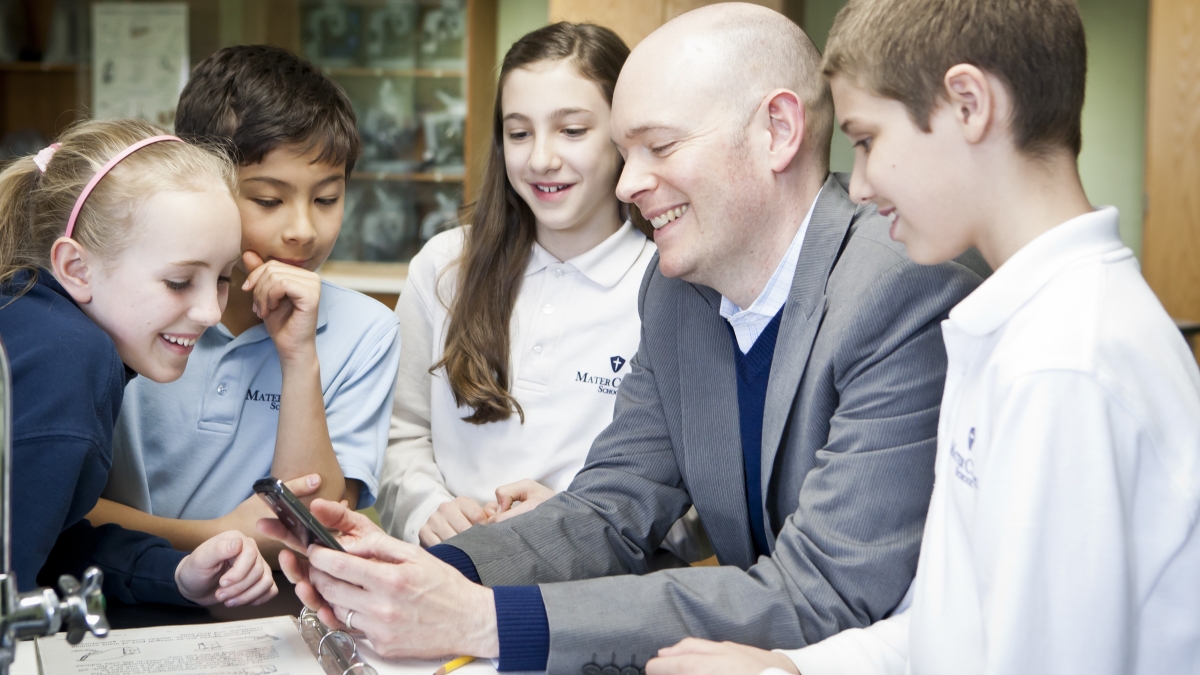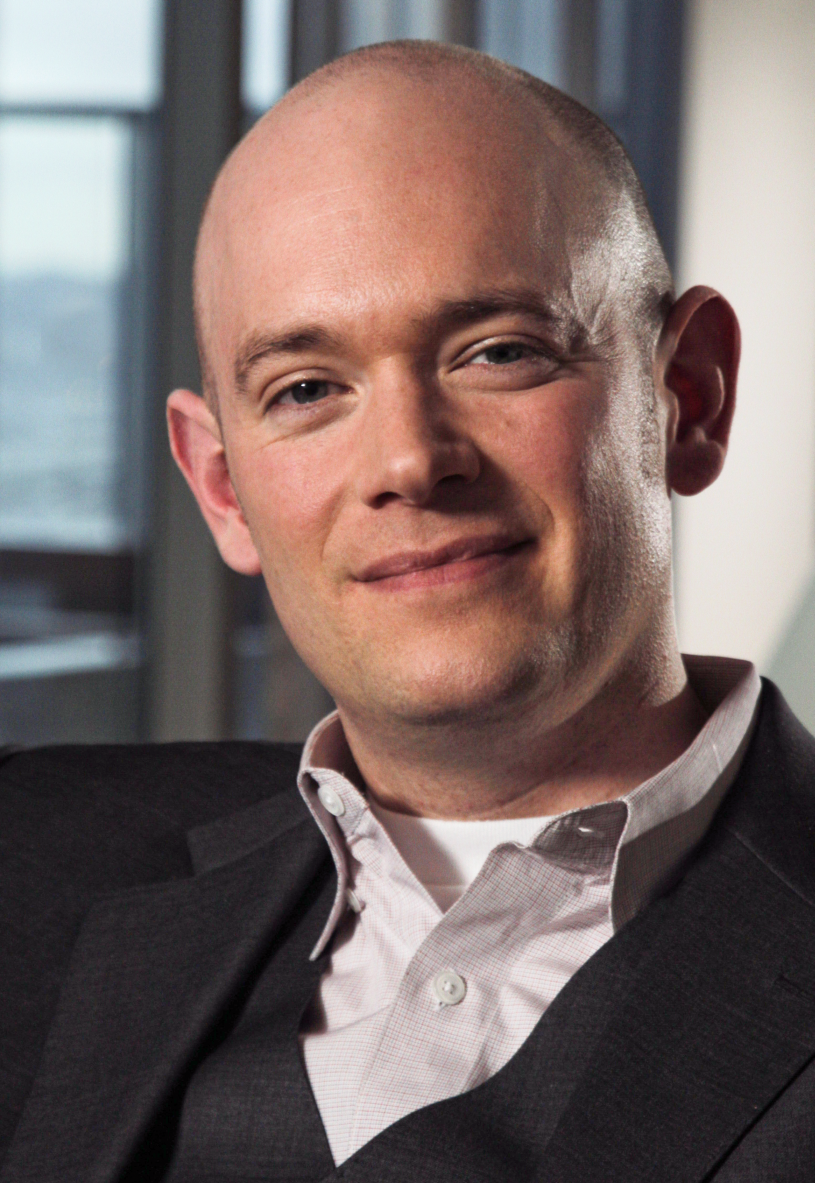The future doesn't have to be scary
Brian David Johnson joins ASU as futurist who isn't afraid to confront the fears of a dystopia to build safe tomorrow

Brian David Johnson is smarter than you are.
Don’t feel threatened by that statement. Find hope in it. Because Johnson’s job isn’t to run around the globe gloating in his intellectual superiority; rather, he’s a frequent flier whose greater purpose is to help people confront their fears by surveying the future.
This is why Johnson is smarter than you or I: He doesn’t hide from the fears of tomorrow’s dystopias; he embraces these concerns in hopes of helping us avoid them.
Johnson (pictured at left) will continue that mission at Arizona State University this semester as its futurist in residence at the Center for Science and Imagination, and as a Professor of Practice in the School for the Future of Innovation in Society.
His greatest asset in this fight is people’s imagination. The author and technologist — who’s best known as the futurist at Intel — wants to challenge the students at ASU, and the people of the Valley community, to use their creativity to construct a better vision of the future for all.
Johnson’s time at ASU will be focused on two things: His Future of the American Dream project and 21st Century Robot, which aims to give every child the ability to build his or her own robot. He recently took time for a phone interview to talk about these projects and how fear shouldn’t be a motivator to regulating technology.
Question: Let’s start with the obvious question for a futurist working at Intel — what technology will we want in five years?
Answer: Well, as we move to the year 2020 ... the size of (a computer) chip begins to approach zero. As we approach the year 2020 we get to 5 nanometers. That is 12 atoms across. It means we will be able to turn anything into a computer. My desk. My jacket. My body, into a computer. This radically changes how we need to look at the world. Then the problem isn’t asking the questions of what we can do, but can we get it done? It's a holdover to the industrial revolution. Now we know we can turn anything into a computer and can make it intelligent. What do we want to do? That's another reason I came to ASU. How can we use all of this intelligence? All of this connectivity? How can we use it to make them healthier and happy and more sustainable? Once we do that then it's just engineering. We can go and build it. Really, imagination is the number one most underutilized tool. Everybody has imagination, but we don't have a culture that supports it, that values it as a business tool, as an educational device. In five years, if you can imagine it you can build it. But you have to imagine it.
Q: I see your point about imagination, but history has shown that government and bureaucracy are often blocking innovation. How do you get past those potential roadblocks?
A: If we set the bar high enough and we're using it to solve problems. Technology is just a tool. It doesn't get to decide what it does; we do. A tool isn't really interesting until you can talk about what a tool can do. So I think if we start thinking about the science and technology and the work we're doing ... this will lower the bar (of government oversight/regulation).
Q: Assuming we get past the limits of imagination and oversight. What can we do expect from this technology breakthrough?
A: I think there are a couple of things we can do. It's absolutely ridiculous that we have all this technology around us and it doesn't know us. I have to introduce my smartphone to myself every time I pick it up. I spend more time with my phone than my family. It's kind of ridiculous that it doesn't embrace our humanity. We need to understand we imbue our technology ... with our hopes and dreams. These devices should understand us. They should be our proxies. Now there are certainly security concerns and data concerns ... but we will see a time when our technology embraces our humanity and allows us to be more human.
I'm a nerd. I'm a completely self-professed geek. For the past 10 years I've been working on the 21st Digital Robot ... it's one of the reasons I came to ASU, that we see robots not as something scary but as something social. Robots that should be easy to build and program, as easy as smartphones. Everybody should be able to build their own robots, having them imbued with imagination and personality and quirks. So we're going to be going into underserved schools ... and working with students to build robots.
Q: These projects, and your past work has had a recurring theme of using information or imagination to defeat the fears of technology overtaking us. Why is this such an important issue to you?
A: Fear is a very dangerous thing. When your brain is frightened you can do one of three responses: fight, flight or freeze. Nobody ever had a genius idea out of fear. A colleague of mine once said, "Brian, fear makes you stupid." What I spend a lot of time doing is I don't shy away from (fearful outcomes). But I also think we have to be responsible for our dystopias. The future doesn't just happen; it's built by people every day. The future is intensely local, as well. I work with people and tell them they have to be responsible for their dystopias. Tell me about your fears, then what you are going to do about it. That to me is very insidious and worrisome, when people do have those fears about technology and robots taking over the world. People are worried about the safety of their families and neighbors, and that's a good thing. But I try to empower people and tell them they can build their own futures.
Q: How do people respond to this?
A: Usually they're very angry with me, in the beginning. I spend most of my life on the road. Again, the future is local, so I go where the future is being made. I take this very serious. You have to go talk to these people. And often people stand up and get angry with me. I try to make them calm down. I tell them, you're worried technology is stealing your daughters from you and that's a good thing. You love your daughters ... we need more of that. Technology doesn't get to decide. We build (technology). A gentleman I was saying this to was getting bothered with me. I said, "Do you watch TV when you eat dinner?" He said it was turned off. I said, "Good, you get to decide. The TV does not."
Q: What are your fears?
A: I have just one. It ties back to that humanity piece. I do believe we do imbue our technology with humanity. We have different religions and beliefs. That's fine. The future involves everybody. The future involves people you don't agree with and people you don't like. That's OK. We thrive on our diversity. So I have no problem with conflict. It's our job to figure out how to make them right. If we embrace that our technology and business and organizations can become better angels they don't have our hubris, they don't have our flaws. We can actually design them to be our better angels. To take care of the people we love and make our organization better. The flip side of that is evil. I wrote a book called "Humanity and the Machine." I did some research ... evil isn't some demonic force ... evil is not understanding the consequences of what's going on. What that means is if we're creating these machines and not putting our humanity in it ... then we're creating machines of evil. That is a thing that worries me.
Q: Here's what I find interesting about the American Dream: Its DNA is built on nostalgia. The dream isn't to go where we haven't been, but to achieve what's already been done — success, happiness, wealth, etc. So when we talk about the future of the American Dream, we really are discussing the present or near past. So why look into the future for this dream?
A: That's a great question. That's specifically why I framed my project, my class, my book, “The Future of the American Dream.” It becomes a conversation about the future. Whose America and whose dream? It's not only limited to the population of America. It turns out there's more talk about the American Dream outside of America. I found that there's a hole in the collective imagination of America. This is the great imagining. Imagining the future of America and the world. It's a micro and macro question at the same time. Why I like the question is that it allows us to talk about the bad ... a whole host of things we need to work on. But we first need to talk about our dreams. If you haven't figured it out yet, I'm an optimist. I'm a declared optimist. I think we should get together and create a future that doesn't suck. So much of this is about a dialogue. I will never get it right. But the only way I get it less wrong is if I go out and talk to people.
Top photo: Brian David Johnson is shown sharing his smartphone with students. Photo by Sara Lavoie/Mater Christi School, Burlington, Vermont
More Science and technology

ASU author puts the fun in preparing for the apocalypse
The idea of an apocalypse was once only the stuff of science fiction — like in “Dawn of the Dead” or “I Am Legend.” However these days, amid escalating global conflicts and the prospect of a nuclear…

Meet student researchers solving real-world challenges
Developing sustainable solar energy solutions, deploying fungi to support soils affected by wildfire, making space education more accessible and using machine learning for semiconductor material…

Miss Arizona, computer science major wants to inspire children to combine code and creativity
Editor’s note: This story is part of a series of profiles of notable spring 2024 graduates. “It’s bittersweet.” That’s how Tiffany Ticlo describes reaching this milestone. In May, she will graduate…
